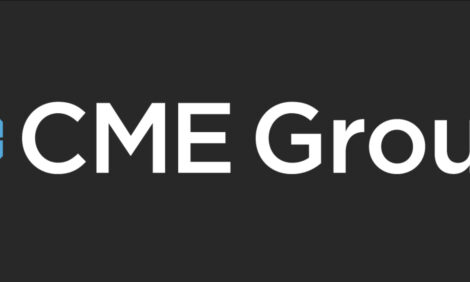



Pork Commentary: Hog Markets Continue to Languish
CANADA - This week's North American Pork Commentary from Jim Long.Hog markets continue to languish. Producers continue to lose money and faith. The H1N1 issue, high feed prices, market access, and domestic and global economic issues continue to drag down our industry. On that happy note:
Some Observations:
- Last week we were watching CNN. Kitty Pilgrim (nice name) was interviewing two virologists about H1N1. Of course all the time she called it the swine flu and the caption was swine flu. She did her best to get the two experts to talk about dire consequences of H1N1. They on the other hand would not take the bait, both saying it was a mild flu. The best part was when Kitty breathlessly asked what about the fall, we won’t know until then how bad H1N1 (she called swine flu) will be. We had to laugh both virologists said and agreed its fall – winter conditions in the Southern Hemisphere now. Australia, and South America have H1N1. If it’s going to get worse in the fall – winter conditions they will see it now. So far – so good.
- The CME Meat Report last week explained very well our current price situation. We have about the same amount of pork last year but we have a decline in Russia, China, and Mexico exports mostly triggered by H1N1 issues. Consequently, about 7 per cent more meat is available than would have been expected. 7 per cent is a significant amount in a commodity business. The inelasticity in supply – demand rations explains the 20 cents lean plus low we are seeing compared to what would have been expected.
- Retail price of pork is about the same as a year ago. Pork cut outs about 20 cents a pound less than a year ago. Retailers for all intents and purposes don’t care about producers just their bottom line. As one person told us, meetings with retailers are nice – they listen to our concerns, nod and smile and go back to maximizing prices in their stores. If there is one positive from this it is that despite retail prices that have stayed up, pork is moving domestically relatively well considering the increase in pork supplies. So despite how bad we feel about our industry, it’s good to note America’s consumers continue to pay strong prices for our products. We are producing something consumers want. That is long term positive.
- Small pig numbers from Canada to US continue to decline with five weeks in a row below 100,000 per week (first time consistently under 100,000). As liquidation continues in Canada there will be less little pigs in the future.
- Smithfield Foods is by far the largest hog producer in the world. They did not get that big without knowing the business. Last week Smithfield released their financial results. On the pork production (packing – processing) they made in operations $395 million for the year. On the hog production side for the fiscal year, Smithfield lost $521 million. Smithfield has give or take one million sows. About 1/6th of USA hog production. If Smithfield is a barometer of our industry, the $521 million loss times 6 would be a total hog industry deficit of $3 billion. Not much if you say it fast! Simple arithmetic about 6 million sows, $3 billion loss = $500 per sow loss or about $25 -$30 per head. In line from what we figured has happened.
- One of the factors in the direction of our industry has been the equity of land based grain growing producers. Many can have pigs as long as they want. Case in point: Canada’s total farm assets are $317.7 billion – total farm liabilities $53.2 billion = Total Canada Farm Equity of $264.5 billion. Relative to any industry agriculture equity ratios are massive. Many producers can have hogs through any down turn.
- Hog prices remain strong in Europe. Germany had 1.456 Euros per kilo; Spain had 1.560 Euros per kilo. That calculates 92 – 97 cents US per lean pound. European supplies are down, a consequence of 1.5 million sows leaving Europe’s production base.
Shoot the Messenger
Last week had several hostile e-mails from paid employees of pork organizations. They were outraged by our comments on their overall ineffective response to H1N1 and its portrayal in the media as swine flu. We had to laugh. Have they got nothing better things to do than to respond to us! If they were as aggressive going after the meat puppets that talk on television and continually refer to swine flu, the case would be closed. Of course all negative e-mails we received were from pork organization employees who don’t own hogs. No one who owns hogs came to any pork organizations defense. Look in the mirror cowboys – your stakeholders did not jump to defend your honor! Case closed. You have been mostly useless. Shooting the messenger is a sign of organizational failure.
- It appears to us, US breeding herd liquidation is increasing. Smithfield is intending to ship about 27,000 sows from its Dalhart Texas operation. Overall sow slaughter is increasing while there are many reports of sows backing up. We have even heard of unconfirmed reports that Big Sky Farms – the world’s largest government owned hog operation is sending more sows to market. The US producer program that was attempted to buy out sows with a $20 per head fee has failed. Few have $20 per sow to contribute. We expect further liquidation in the coming months. We expect the US breeding herd has liquidated 50 – 70,000 since 1 March when the June Hogs and Pigs Report is released.
- Lots of empty finishing barns in the mid – west. Less Canadian pigs and less American pigs make empty barns. One owner of a hog management company told us last week there are more empty barns than ever. Barn space has dropped to $25.00 per head. $4.00 in $4.00 out. Feed companies who made keep full contracts are sucking air paying for empty space and not selling feed. All in all not real pretty. The only upside is at some point empty barns mean less hogs. It can’t be soon enough. We are in a world of hurt.
Summary
The scenario is setting up – less hogs in the future. There are less sows every day. No new sow barns are getting built. Domestic pork demand is decent, we need export markets to open up and improve. We all know profitability will come back. Hog prices are in the lower 5 per cent of historical ranges. My grandfather told me “when everybody is selling, it’s time to buy!”







